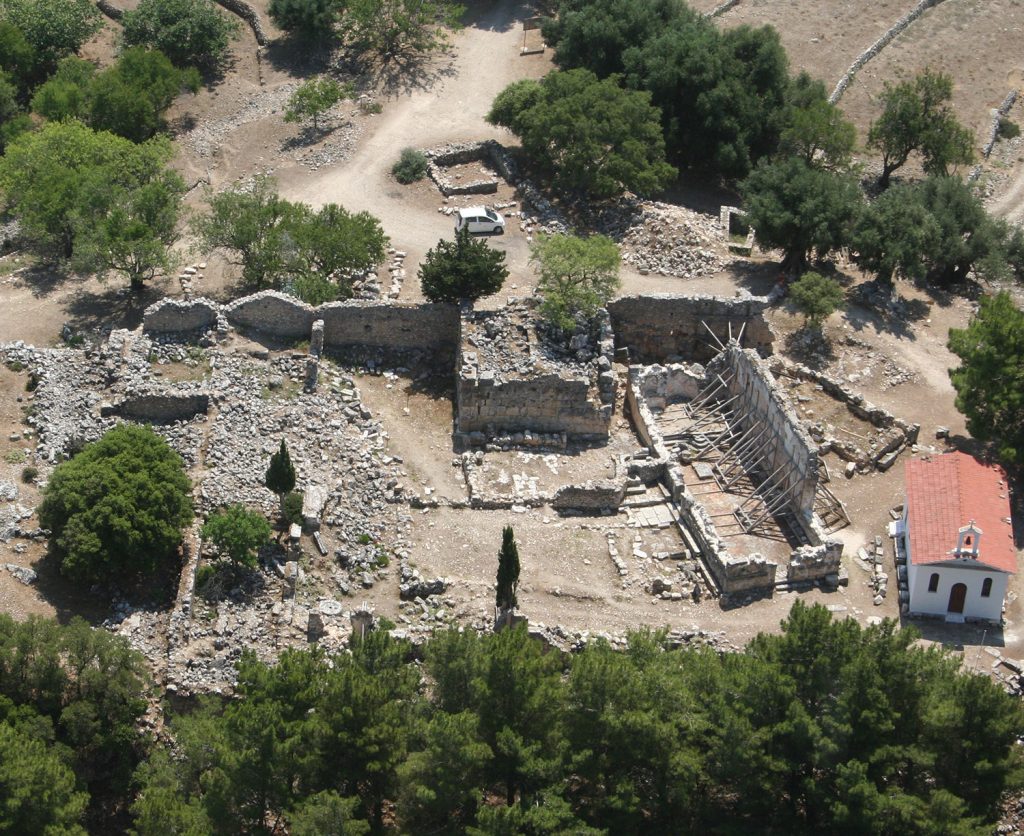The remains of the holy monastery of Agioi Fanentes inside the ancient fortification wall.

The remains of the holy monastery of Agioi Fanentes inside the ancient fortification wall.
agioi_fanentes_1
The Monastery of Saints Fanentes was built on the Kyatis hill of the citadel of Classical Same, inside its fortification walls. A tower of the ancient walls was incorporated in the monastery’s defensive tower. The monastery’s name, after which the hill was renamed into “Agioi Fanentes”, apparently comes from the corrupted name of ‘Agioi Neofaneis’, the holly saints of Same, St. Theodor, St. Gregorius and St. Leon. According to tradition, the saints’ relics were found in a cave of the area and were lost in a shipwreck in the sea area of Fiscardo as they were being transported to the West. According to another version, the name of the monastery is related to the Gnostic philosopher Epiphanes of the 2nd century AD, who according to Clemes the Alexandrean was honoured as god at Same. The monastery was built before 1264, the year of its first recording in the proceedings of Kephallenia’s Latin Diocese. After flourishing in the 17th century as a significant spiritual centre with a hieratic school, it was closed down in 1805.
Although there are remains of the Post-byzantine period in the monastery complex, and its catholic was renovated in 1633, architectural members immured in the wall of the catholic attest to the existence of a middle Byzantine temple. The complex follows the typical Byzantine structure with cells along a four-sided surrounding wall/peribolos and the catholic temple standing free inside. The re-use of the ancient fortification tower and the defensive type of the monastery’s walls make the whole complex look like a fort and reflect the monastery’s need for protection from pirates’ attacks, which plagued the island during the period of Frankish and Venetian Occupation.
The cemetery’s church of Saint Nicolas was the monastery’s glebe. It was contemporary with the catholic temple and lay a few metres to the south. The church belongs to the one-roomed Ionian basilica type and is now deserted. Stone blocks of the ancient fortification walls are visible in the lowest part of its walls, while part of its wooden altarpiece was incorporated into that of the Agrilion Monastery after the 1953 earthquake. The all-painted temple’s frescoes date to the middle of the 17th century, reflect conservative models and are characterized by features that ascribe special significance to the monument.